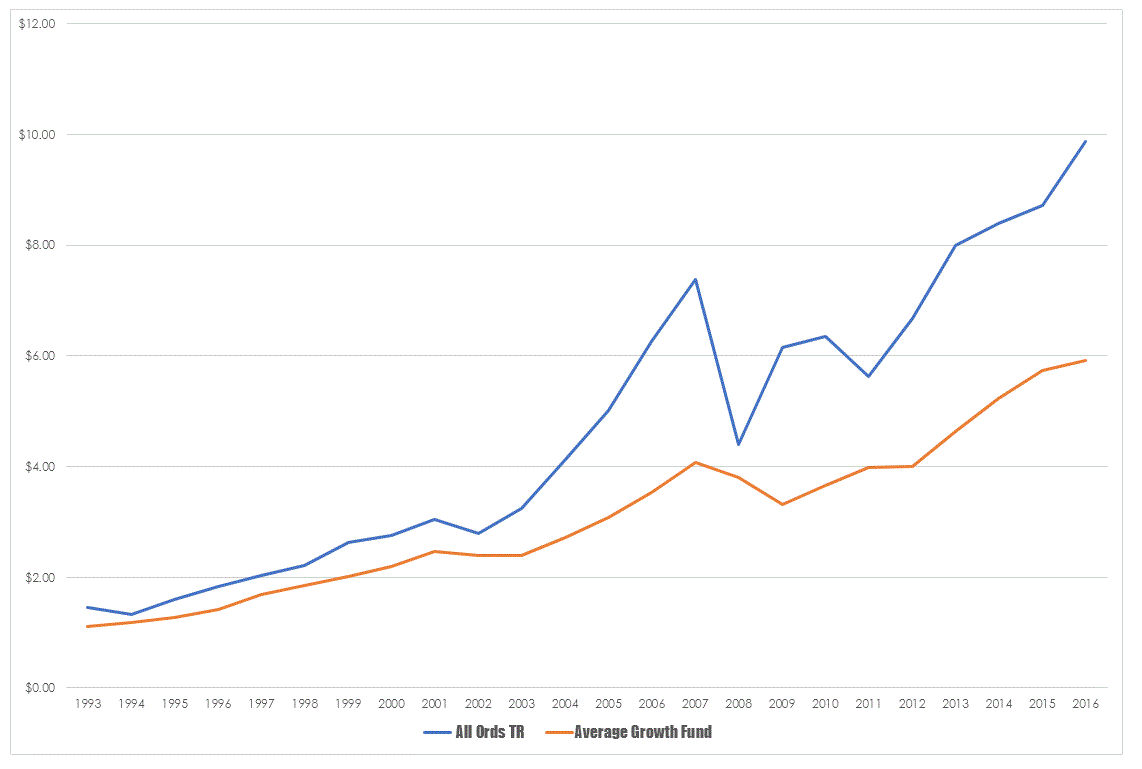It is at this time of the year when superannuation funds crow about how good they have done and of their inestimable benefit to mankind in general and this year was no exception. So as is my now annual tradition I thought I would have a look at how good they have done and compare that to the real world where delusions about how good you think you are dont exist. From the article I linked to I took this table which looks at the average return of a a growth fund since 1993.
Source – Superannuation returns above 10% for the June Year
This piece acts as a good starting point for comparison with the market. For this I used the All Ordinaries Total Return index which used to be known as the Accumulation Index. It includes not only the price movement of the index but also folds back in the dividends of the index components so it is a good benchmark for simply passively holding an index fund or ETF.
When the chart of the average return of a growth fund is first viewed it does create an overall favourable impression – there are only three negative years and returns seem overall to be quite robust. It is only when you compare this active management with a passive benchmark that you realise how poor local managers actually do when compared to the index. Remember these are people who are paid to beat the index and as we will see they are paid staggering sums of money. Looking at annual percentage returns is quite crude and does lack a bit of fidelity, you dont actually know what the true performance differential is so I looked at the value of $1 invested into an average growth fund and into the index and got the following.
The market leaves the industry for dead – the market investment would now be worth $9.87 versus the industries $5.91 and for this privileged investors have been ripped off handsomely. The chart below looks at what my guess of the annual fee intake of superannuation funds is. For this I have assumed an average fee of 1.5% to cover not only management fees but also advisor commissions.
So to produce a theoretical return of slightly better than half what the market produced in the period above the superannuation industry has collected probably close to $310B in fees. So to once again steal from Winston Churchill – never in the field of human endevour has so much been paid to so few for so little.











This really makes me cringe and reminds me why I want to learn to manage my $ myself!
How does anyone get a job in one of these funds. Are they handed from father to daughter/son. With the enormous amounts of money involved I imagine it to be a very closed shop. Just wondering.
That is an excellent question and might a good article.